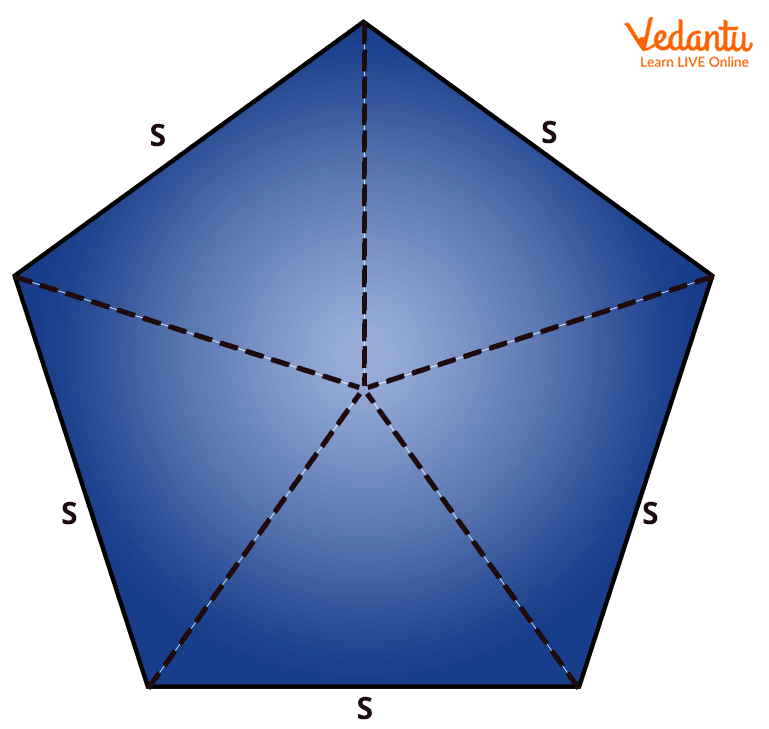




The concept of side in Maths is something very fundamental, and this concept should be picked up almost spontaneously by kids as they play around with toys or are curious about objects. The knowledge of side in Mathematics or in general is very basic and should be absorbed and retained for life. Let us learn more about side definitions in Maths in this article.
Meaning of Side in Maths
In any two-dimensional figure, the line segment that joins two vertices is known as a side of the figure. In the case of a three-dimensional figure, the side that we are talking about will be called an edge. Different shapes have different numbers of sides and side lengths. Let us see a few examples.
Examples of Sides of a Few Two-Dimensional Figures
The minimum number of sides required to form a two-dimensional shape is 3, which gives us a triangle. The next number would be 4, giving us a quadrilateral, and so on. Let us go through a few examples to understand better.
Triangle: A triangle is a two-dimensional figure that has 3 sides. In the case of an equilateral triangle, the side lengths are equal, while they vary in isosceles or scalene triangles.

Sides of an equilateral triangle
Quadrilateral: A quadrilateral is a two-dimensional figure that has 4 sides. A rectangle is a regular quadrilateral with opposite sides equal, a square is a regular quadrilateral with all sides equal while a trapezium is a quadrilateral where the side lengths are unequal.

Sides of a rectangle
Pentagon: A regular pentagon has 5 sides of equal length while an irregular pentagon has 5 sides of unequal lengths.

Side of a regular pentagon
Point to Note
Figures like circles, which have curved boundaries, do not have sides. A circle is bounded by a curved line called the circumference.
Conclusion
Sides are the line segments that join the vertices in any two-dimensional figure. They form the boundaries of the figure and are used to formulate measures like area, perimeter, and so on. It is a basic concept that should remain clear in the minds of children throughout their academic years and even further.
FAQs on Side Definition in Maths – Meaning, Examples, and FAQs
1. What is the basic definition of a 'side' in mathematics?
In geometry, a side is a straight line segment that forms part of the boundary of a two-dimensional (2D) polygon. It connects two endpoints, which are called vertices or corners. For example, a triangle is a shape defined by its three sides.
2. What is the difference between a 'side' and an 'edge' in geometry?
The key difference lies in the dimension of the shape. A side is a line segment on a 2D flat shape like a square or a triangle. An edge is the line segment where two faces of a 3D solid object meet, such as on a cube or a pyramid. A cube has 12 edges, while a square has 4 sides.
3. How are sides used to name and classify different polygons?
Polygons are named based on their number of sides. This classification is a fundamental concept in geometry. For instance:
- A 3-sided polygon is a triangle.
- A 4-sided polygon is a quadrilateral.
- A 5-sided polygon is a pentagon.
- A 6-sided polygon is a hexagon.
4. Can a shape have curved sides?
In the strict definition of a polygon, sides must be straight line segments. Therefore, shapes with curved boundaries, like a circle or an ellipse, do not technically have 'sides'. They have a continuous boundary called a circumference or perimeter. The term 'side' is reserved for shapes made of straight lines.
5. How are the sides of a triangle related to its angles?
In any triangle, there is a direct relationship between the length of a side and the measure of its opposite angle. The longest side is always opposite the largest angle, and conversely, the shortest side is always opposite the smallest angle. This principle is crucial for solving problems in geometry and trigonometry.
6. What is the difference between a side, a vertex, and an angle in a polygon?
These three components define a polygon:
- Side: A straight line segment that forms the polygon's boundary.
- Vertex: A corner point where two sides meet.
- Angle: The amount of turn or space between two sides that meet at a vertex, measured in degrees.
7. What does it mean for a polygon to be 'regular' in terms of its sides?
A polygon is called a regular polygon when all of its sides are equal in length and all of its interior angles are equal in measure. For example, a square is a regular quadrilateral because it has four equal sides and four equal right angles. An equilateral triangle is a regular triangle for the same reason.









